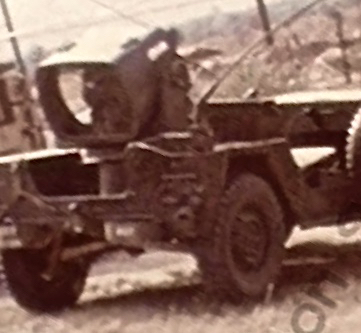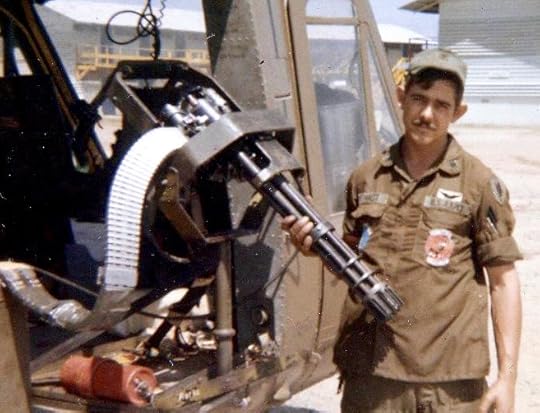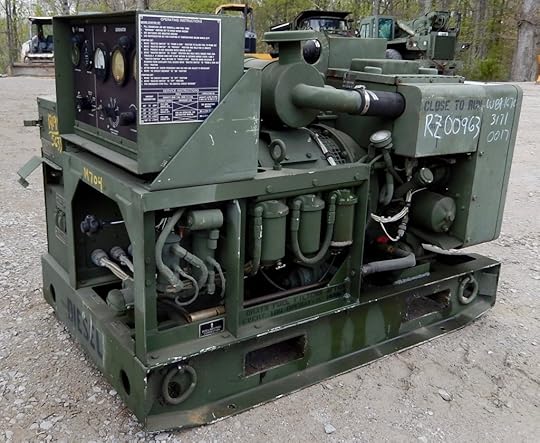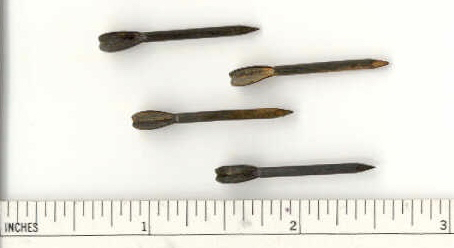Chuck Heindrichs – Battery Commander – Part Five
How Things Got Done In Vietnam:
The Generator Story
One of the more interesting stories, we used to have this Air Force sergeant in charge of our supply logistics at Phan Rang. He wanted so bad to come out to the firebase to experience a mortar attack in combat. This guy was a nut. So the battalion commander brought him out. “This guy does us a lot of favors and just wants to come out and be with you guys.” So he stayed about four days and we had one mortar attack during that period. He thought that was the most exciting thing.
About two weeks later we get this call from Phan Thiet that they are going to bring in a supply run and they had some special boxes for us. The supply chopper arrives and they drop all this stuff off at the pad, and here’s these M60 tank Xenon searchlights, one of which we mounted on the back of a jeep.We’d drive the Xenon on the jeep around the perimeter at night. Plus it had infrared capability. If you had enemy sneaking up on you, you could see their infrared signatures.
 Xenon Searchlight
Xenon Searchlight
The Air Force sergeant gives me this long lesson about the eye of a deer and a human being. If you run the Xenon light and you see a bright white pinhole off in the woods and it does not disappear, that’s an animal. It has to do with how the eye of an animal is designed and how the light reflects off the back of its eye. A water buffalo or any other animal is going to stand there and stare at the light and freeze. If it’s red and it disappears it’s probably a human being, on account of how the human eye is built. A human upon being spotted, on account if how the human eye is built, is going to show up red and then disappear.
Then this Air Force sergeant comes out a month later and says, “I have a mini-gun for you.”
The very gun mounted in the AC-130 gunships, and also mounted in attack helicopters and larger ground vehicles.
 In love with his mini-gun
In love with his mini-gun
I said, “No, that’s not gonna happen. We may have problems out here but I don’t want somebody sitting up in a tower or bunker with a mini-gun.
Then he comes back with, “I know in your Fire Direction Center you have two little 10 kw generators. What would you say if I sent you out a 30 kw generator?” And he sent the damn thing out!
 30 kw generator – the size of a water buffalo
30 kw generator – the size of a water buffalo
And he sent us more lighting and wiring. This was the only time I used my electrical knowledge. The 30 kw was a three-phase generator, and I actually sat down and diagrammed all the wiring on the base so that we would balance out the three phases.
Initially the generator just sat there because I couldn’t get the First Sergeant to get the wiring trenches dug to the hooches around the firebase. Finally one night I said to him, “Top, I am really concerned about the 10 kw generators in our Fire Direction Center, because you know those things only have so many hours of life and then they’re dead. We’ll probably have to arrange for some periods during the day when we just don’t have the generators on.”
I knew that the refrigerator in his hooch where he kept his cold beer was hooked to one of those 10 kw generators. I said that to him on a Wednesday, and on Thursday morning at six o’clock this young kid is beating on my door yelling, “Sir, where do you want your wiring run?” I look outside and there’s like eighty beavers digging trenches all over the base.
The Demo
We’ve got this delegation from the Pentagon and from Ft. Sill coming out to see live fire demonstrations of defending a firebase, and they especially wanted to see a demonstration of the Firecracker round.
An airburst round that ejects bomblets high in the air, which then open fins and float spinning to earth. The fluttering fall has the appearance of a butterfly in flight. Upon impact a spring on the bottom of the bomblet throws it back into the air where it explodes at about six feet. The bomblets detonate with the energy of hand grenades. At a distance the quick succession of explosions sounds like a string of firecrackers. The 105 mm howitzer version carried eighteen bomblets. The Firecracker was effective against enemy in the open, or in positions without overhead protection.
Unfortunately the bomblets sometimes did not explode when they landed in rice paddies. They would explode later when kicked by someone wading through the flooded field.
Twenty minutes before the delegation arrived we also shot up some test Firecracker rounds to make sure in the live demo the ordnance would come down where we thought it would.
We also had a howitzer wheeled up on the berm to fire a Beehive round, because we intended to show the delegation everything we had.
The Beehive round contained eight thousand fleshettes, and was fired like a shotgun directly at enemy during a ground attack.
 Fleshettes recovered from a Beehive round fired in 1970
Fleshettes recovered from a Beehive round fired in 1970
And we planned to show them a High Explosive airburst just over the berm, where you bore site the tube and fire the round with just 3/10 of a second on it. We picked the gun that was going to do it and made damn sure it was bore sighted the way it should be.
Here comes the delegation of ten or twelve people: Pentagon desk jockeys, female officers from Ft. Sill and a handful of neophytes. I was surprise and pleased to see that one of them was my old commanding officer in my old Honest John rocket unit in Europe. He was a full bird colonel and the most unpleasant guy you could possibly imagine. Everybody hated him, but at the same time everybody loved him because at least he was predictable. His last name was Hackaday and everybody called him The Hawk. I was his HQ battery commander for five months, the most unfulfilling job I ever had. (Headquarters battery jobs involve administrative housekeeping.) Now The Hawk and I could share some laughs.
We start with a little show of bravado giving them all steel pot helmets, like going on a construction site. We walk around the firebase briefing them as to our role, where the Viet Cong are in our area, and all that phoo phoo.
Then we start the live fire demonstration with the Firecracker. We take them to the east end of the firebase near where the road leaves the base. Just over the berm and near that access road is where the Firecracker round will detonate. We explain the use of Firecracker in the self-defense of an artillery firebase, and draw their attention to the guns behind them, at the west end of the firebase, pointed in what appear to be straight up into the sky ready to fire. I move them all over to the berm close to where the Firecracker round will drop its load and instruct them all to look out. I give the XO the signal, and he fires. We’re watching the little bomblets floating and spinning down close to us, and you could hear this one guy go, “Oh my god.” I tell them all you might want to duck down a little bit in case one of them doesn’t quite go where it’s supposed to. Of course we had just fired a practice round before they arrived. They were astounded with the explosions just on the other side of the berm, basically a bunch of grenades going off.
Then we walked back to the other side of the firebase where the guns were located to demonstrate the timed airburst just over the wire. We’re on the inside of the berm looking back at the gun. It’s a little scary because that round is going over the berm not much more than two or three feet. We fired that thing and it went off about 50 feet past the berm. None of them had ever been that close to an artillery round going off. They may have seen fire demonstrations at Ft. Sill, but it would have been from the bleachers. I had told them that when an artillery shell goes off in an airburst most of the shrapnel goes straight up or forward, but some of it is going to come back so you may experience a little of that, and sure enough when the round exploded small pieces of shrapnel were raining down on them.
Then we fired the Beehive from the gun on top of the berm. I think they got what they came for. It was glorious!
Scaring visitors was one of the delights of serving at LZ Sherry.



